In much of Florida Bay, Biscayne Bay National Park, the Indian River Lagoon (IRL) and Pine Island Sound, there's far less need to tie weedguards on your flies these days. Because of South Florida’s antiquated water management system, which is mostly designed to provide irrigation and flood control at the expense of Everglades ecosystems, the seagrass meadows in these iconic flats-fishing destinations are fast disappearing.
What do I mean by fast? Over the summer of 2016, an estimated 10,000 acres of seagrass died in Florida Bay, in the vicinity of Flamingo, within Everglades National Park. The worst affected areas include some of the Park’s most famous, productive and accessible flats, such as Snake Bight, Garfield Bight and Rankin Bight. Places that you’ve read about for years, and have fished or dreamed of fishing, have lost most of the seagrass varieties that provide essential shallow nursery habitats and foraging areas, while keeping the water clear enough for fish to feed and anglers to sight fish.
Sandy Moret, world-class fly fisher and owner of Florida Keys Outfitters in Islamorada, says that it’s time for tourism promoters to be honest about the sorry state of the Bay, and press elected officials and water managers for real solutions.
Sandy reports that, ”As far as the fishing out front of Flamingo, our guides are fishing the northeast bights where the grass has died, and finding just a few snook and redfish, not in the numbers we’re used to.” He added that, “We are nervous about the summer warmup and probability of algae blooms. And though we are in total favor of increased water flow to the Park and Bay, there’s still uncertainty down here among old-timers about the quality, nutrient-wise, of the water that we ultimately get.”
The quality of water irrigating estuaries is crucial. Properly functioning estuaries require a range of fresh inflows that contain appropriate levels of nutrients and minerals to form the physical and chemical conditions that produce the vast majority of marine species.
Vast seagrass meadows died last summer because Florida Bay became hypersaline. At one point, salinity levels in this legendary fishery were twice as high as the open-ocean waters of the Gulf Stream. Why? Since humans fragmented the Everglades River of Grass, blocking natural flow from the north, most of Florida Bay has relied on local rainfall for the clean fresh water that it needs to function. This summer, South Florida experienced a drought that coincided with one of the hottest summers on record. The heat caused high rates of evaporation that created a heavy brine on the flats. The saltier the water, the denser it becomes. So the brine sunk and smothered the grasses.
A Lit Fuse
This acute die-off of seagrasses in Florida Bay has a well-documented precedent. A chronic shortage of clean, freshwater flows has plagued the Florida Bay fishery for decades now, and the situation has been this dire once before. In the late 80s and early 90s, drought-driven seagrass die-offs fueled massive algae blooms that took five years to abate. Sportfishing in Florida Bay suffered greatly, and never returned to its full former glory. Scientists and guides old enough to remember the blooms of the 80s and 90s fear that massive algal blooms will occur when warm weather returns. These blooms would likely begin a vicious cycle of more and more dead, decaying grass fueling larger and more potent algae blooms, with the nutrients released by their decomposition.
Experts are cautiously optimistic but unsure whether such a vicious cycle will set in again this year. Record rainfall from this El Niño winter has doused Florida Bay in fresh water, restoring salinity levels to a desirable range. Winter winds have blown much of the decaying grass out to sea. Meanwhile water managers have modified flood control strategies to put more fresh water in Park, provided that there is water available, which there won’t be during dry years even with these modifications.
The real solution is far more complicated, and involves massive restoration projects, especially water storage, treatment and conveyance systems between Lake Okeechobee and Florida Bay. Meanwhile, every year of delay leaves Florida Bay and the people who cherish and depend upon it in jeopardy of mounting, cascading ecological and economic losses.
Estuaries Treated as Sewers
As Everglades Restoration drags on into its 20th year, two other iconic fishing destinations sit in similar jeopardy. Since the estuary was artificially connected to Lake Okeechobee in 1937, the southern end of the Indian River Lagoon (IRL) complex, which includes the St. Lucie River, has experienced repeated, devastating discharges—on the order of billions of gallons of filthy water per day--into one of the most biologically diverse places in North America. The IRL boasts more than 800 fish species.
Even more devastating amounts of polluted discharges are sent into the priceless Gulf Coast estuaries within and around Pine Island Sound. They are fed by the Caloosahatchee River, which is also now a man-made connection to Lake Okeechobee. The world-famous fishing destinations on both coasts become black with storm water any time South Florida experiences a wet winter or a significant tropical cyclone. For the opposite reason as Florida Bay—too much dirty fresh water vs. not enough clean fresh water—these water bodies have lost much of their seagrass habitats, as well as their reef-building oysters and other water-filtering bivalves.
In those estuaries, the die-offs are accelerating. I've witnessed a gradual decline in the IRL/St. Lucie River fishery since 2000 when I moved from Miami to Stuart. But conditions took a nosedive since the last massive discharge to the St. Lucie River estuary in 2013. Estuaries along the Treasure Coast, basically from Vero Beach to Jupiter, were rebounding from the discharges and algae blooms that devastated them following the hurricanes of 2004 and 2005. But shoals and flats that were fishing pretty well prior to 2013 are now far less productive. Seagrass shaded by dark runoff died. Sparser grass bottoms hold far fewer spotted seatrout, redfish and snook, or forage species such as shrimp, crabs, pinfish and gobies.
Lake Okeechobee
Ironically, the big lake is currently the “bright spot,” fishing-wise. Though long treated as a “catch reservoir” for billions of gallons of suburban and agricultural runoff, largemouth bass and panfish fishing is off the hook in the shoreline marshes—the best in recent memory— because water managers have held lake levels lower so that they don’t drown the marsh vegetation that produces the fisheries.
But Lake Okeechobee’s great fishing may not last. Efforts are underway to shore up the decrepit Herbert Hoover Dike that rings it, which would allow water managers to keep lake levels above the 16-foot threshold, where we begin to lose marsh habitat. And, the Big O is rife with high levels of nitrogen and phosphorus that cause toxic blue-green algal blooms.
This is the same water that is shunted to coastal estuaries during rainy season when the lake's rising waters threaten to breach its aged dike. Thus, prime fly-fishing destinations repeatedly take it on the chin during wet years, assaulted by massive polluted freshwater discharges from the lake. This water should be cleaned and sent south, eventually reaching Florida Bay where it can mix properly in those too-often salty shallows.
Remedies
Saving Florida's iconic fisheries depends on Everglades Restoration, which has taken far too long. The consensus now is that the River of Grass is at a crisis point. Failing fisheries provide the proof.
Though few dedicated water storage and treatment projects in the Comprehensive Everglades Restoration Plan (CERP), authorized by Congress in 2000, have been built, momentum for “emergency” measures has increased. The “major dam, ” the Tamiami Trail highway linking Miami with Naples, now has a one-mile raised bridge under which water can flow from the central Everglades to Everglades National Park and Florida Bay.
At this writing, water is being sent under this span. (Another 2.6-mile raised section will see ground-breaking this year). It's a big help, as is a canal modification just outside the entrance to the Park, which will divert more fresh water to the Park and the Bay. This modification should also allow more water to seep into southern Biscayne Bay, which is hypersaline in dry season, and thus losing seagrass as well.
Large-scale projects such as the Central Everglades Planning Project (CEPP) will be included in the current Water Resources Reform and Development Act (WRDDA) going to Congress for authorization and hopefully, appropriation. CEPP will provide the “spigot” to send water south “though the hose” to Florida Bay, but will only divert perhaps 15 percent of the discharges to the St. Lucie estuary, and wont be operational until 2029, so reactions are mixed among affected stakeholders.
Independent scientists asser that nothing short of a large (50,000-plus-acre) reservoir south of Lake Okeechobee will store, clean and convey enough water to spare the estuaries of discharges and irrigate Florida Bay.
The key to saving Florida's world class fishing is ramping up the pressure on Florida's governor, state legislators, and the state’s federal partners to honor their partnership with Florida to secure funding. We must accelerate CERP projects immediately, buy land and send the water south.
Politicians need to hear from visiting anglers who contribute to Florida’s economy. Contact the following office-holders to voice your concern, and tell them to do everything in their power to keep Florida the Sportfishing Capital of the World.
Governor Rick Scott: (850) 488-7146 - www.flgov.com
Florida Speaker of the House Steve Crisifulli: (321) 449-5111 - www.stevecrisafulli.com
Senator Joe Negron: (772) 219-1665 - negron.joe@flsenate.gov
Congressman Richard Corcoran: (813) 792-5177 - www.richardcorcoran.com
The Fallout for Fishermen
I guide out of Stuart, on the southern end of the Indian River Lagoon. Like every other guide in this area, my business has fallen drastically in measure with the decline in our fisheries, as has my ability to put clients on fish. In 2013, I lost dozens of night fly snook bookings due to toxic blue-green algae warning signs posted on the water. Water-related businesses in Martin and St. Lucie counties tanked. Some never recovered. The El Niño of 2015/16, or rather our water management system’s ability to store and clean stormwater during wet years, may finally kill these estuaries and do the rest of us in financially.

As I write this article in late February, about 4 billion gallons of nutrient- and sediment-rich runoff is pouring into both estuaries through the locks that unfortunately connect the estuaries to Lake Okeechobee. Pompano—my bread-and-butter species for tourist anglers winter through spring—are few and far between. Because of low salinity levels, the pomps won't come inside from the ocean, and are staying in the surf zone. There are also reports of anglers catching 20-inch redfish—juveniles that you typically only find in the estuaries—on offshore reefs more than five miles offshore, in waters as deep as 90 feet. They shouldn’t be there, and will be eaten by large reef fish and pelagic species.
Since this El Niño will likely bring us rain until the wet season begins in June, it looks like the U.S. Army Corps of Engineers and the South Florida Water Management District will have to leave the locks open, possibly until the end of hurricane season or beyond, if a significant tropical system makes landfall here. Otherwise, Lake Okeechobee’s crumbling dike may fail, and our freshwater “inland sea” would cause catastrophic flooding. It’s doubtful that our already beleaguered estuaries can withstand such long-term pollution.
Capt. Daniel Andrews (www.andrewcharters.com) guides out of Pine Island Sound from Sanibel Island to Boca Grande and says, “The flats have a fraction of the turtle grass they had before the last major Lake O discharge in 2013 and now we’re getting clobbered again.”
“The entire region from Matlacha (just outside the mouth of the Caloosahatchee) north to central Charlotte Harbor is a desert,” said Andrews. “My catch rate is down 80 percent or more. My customers who book back-to-back days of fishing are begging off the second day. It's that bad. This estuary can handle local rain and resultant runoff, but not this much polluted Lake Okeechobee fresh water.”
Andrews says the phone has quit ringing for new business. Tackle shops are feeling the crunch, too, as are hotels and restaurants.
“If folks quit coming to fish, imagine the economic repercussions here,” he added.
An economic disaster is also in the making for Monroe County (Florida Keys) should Florida Bay collapse. Florida Bay sustained my guiding business in the late 80s before the 5-year-long algae bloom sent me packing. When not guiding I often shared a skiff with veteran Miami fly fisher Vince Maggio in both Florida Bay and Biscayne Bay. Maggio has kept meticulous catch records of his redfishing on the flats near Flamingo on Florida Bay. Incidentally, he has all but given up on bonefishing in Biscayne Bay.
“Bonefishing was challenging enough when they were plentiful in the 70's and 80's,” said Maggio. “Now it's a monumental feat to catch one on fly. The number of bonefish sightings for me has dropped to frightening numbers.”
Maggio reports the same about Florida Bay redfishing. “As recently as five years ago, sight fishing for reds was worthwhile,” said Maggio. In the early 2000's my logbook shows a typical year (40-plus trips per year) would be 200 to 300 redfish landed on fly. Last year, on 40-plus trips, I caught 19 redfish in total. The previous year wasn’t much better. The fish are simply not there, and neither is the seagrass. Its not a coincidence.”
Maggio reports that many guide friends and anglers share his belief that years of insufficient water delivery from the Everglades to Everglades National Park and Biscayne Bay has put both Florida Bay and nearby Biscayne Bay Bay on the verge of collapse.




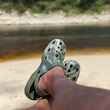







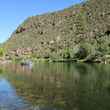



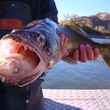




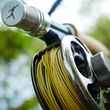
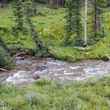



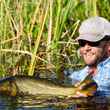
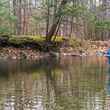

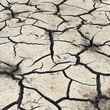
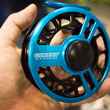
Comments
David Friedman replied on Permalink
Like many lagoons/bays/estuaries have experienced extensive land use changes from their contributing watersheds. Natural undisturbed lands have been converted to agricultural and suburban/urban uses. Once these lands (SOILS) have been cleared, graded, and experienced heavy equipment impacts the soils do not function like they did in their undisturbed native condition. Coastal plain soils found in Florida and other regions are typically coarse textured soils with rapid infiltration. They have at least 45% PORE space, where water, oxygen, and nutrients are stored. They have infiltration rates exceeding 15 inches per hour, however studies have proven that once these pores have been crushed the soil becomes very dense and infiltration decreases to .03 inches per hour! Thus the disturbed watershed area has been significantly altered permanently, because these Sandy soils have little resilience, and are difficult to restore. Following such disturbance down stream areas experience excessive rainfall runoff volumes carrying sediment and nutrients. And furthermore we have altered the hydrologic cycle restricting the natural flow of rainfall through our soils decreasing freshwater base flows. Studies by UF, US Forest Service, USDA-NRCS and many other institutions have confirmed these findings on farmland and urban lands. Buying more land below the lake maybe one approach, however it would be much more effective if actions were undertaken in the contributing watersheds to restore vital soil functions, that would reduce nutrient transport that results in lower oxygen levels in our estuaries. If you need references and studies I can provide links, also suggest that you contact UF and USDA.
Pages